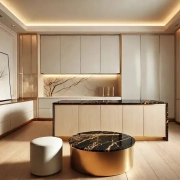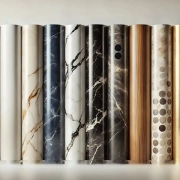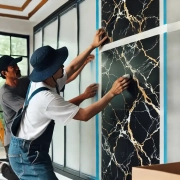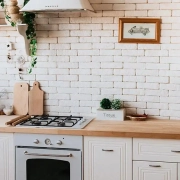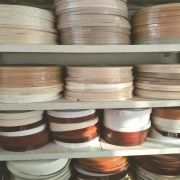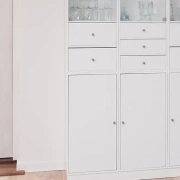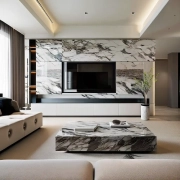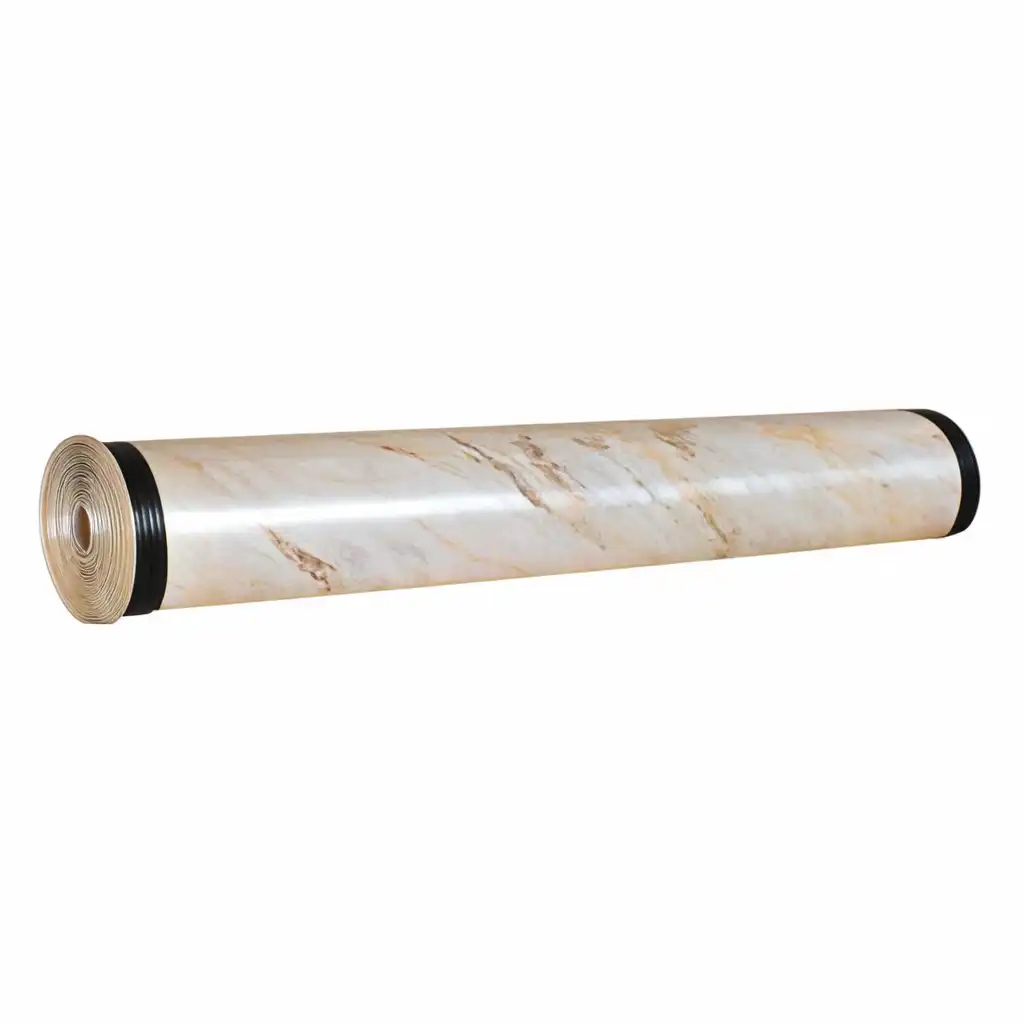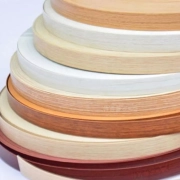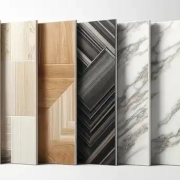How do you choose the suitable gloss-type PVC film for your application?
How do you choose the suitable gloss-type PVC film for your application?
When you have chosen the style and pattern of PVC film for your furniture, you will also face the choice of gloss. How do you select the gloss that suits the overall style of your home and the furniture for your furniture application?
The surface gloss of PVC film can be divided into several types. The most common ones are high gloss, pearlescent, matte, silk gloss, and frosted. Different glossiness combined with its texture can change the visual dimension and atmosphere of the space, as well as the style. Next, let’s discuss in detail how to choose the right gloss from different aspects.
Spaces or simple style spaces that need to improve the brightness of the space
The surface of the high-gloss PVC decorative film is highly reflective and visually has a high gloss. Its reflective effect can make the space appear more transparent, bright, and visually more comprehensive, so it fits the simple style very well.
High-gloss PVC foil film is usually suitable for furniture applications such as cabinets and wardrobes. Take the kitchen as an example. The kitchen is often used and quickly leaves stains and garbage. The space is also much smaller than the bedroom and living room, so a PVC film that can improve visual brightness is needed.
The high-gloss PVC film’s surface reflection makes the space look more transparent and bright, enhancing the room’s layering and three-dimensional sense. This gives people a clean, modern, and open feeling and can also make them happy.
Therefore, if the space where you apply needs to improve its brightness and width, the high-gloss PVC film is very suitable. In addition to the space and decoration style, color matching with different glosses will have different decorative effects.
High-gloss PVC decor film is generally suitable for bright colors (white, bright yellow, light blue, mint green), dark colors (black, dark blue, dark purple), metallic colors (silver, gold, copper), etc., combined with these colors, it can enhance the modern fashion sense of furniture.
Therefore, if your furniture color is the above, you can choose high-gloss PVC decorative film.
Warm, romantic, or classical elegant style space
Like its name, Pearlescent is used to imitate the gloss of pearls. Its gloss is between high and matte but is delicate, soft, and has a little sparkling effect. This glossiness goes well with warm romance and classical elegance.
Its slight shimmering luster can enhance furniture’s luxury, and the soft light creates a dreamy and warm atmosphere. The delicate light can also improve furniture’s elegant, refined temperament and classical sense.
Therefore, if your application is placed in the bedroom, you can choose pearlescent PVC film to decorate your bedroom furniture, such as dressing tables, wardrobes, etc. These furniture pieces are generally soft colors (ivory white, light pink, light purple, beige) or light colors (light blue, light green, light purple), and combined with pearlescent, they can make people feel warm and elegant, thereby relaxing and enhancing the user’s comfort.
Nordic or country-style space
These two styles are simple and natural, low-key, luxurious, and steady, while matte has a soft and rustic luster, which fits well with them. It does not produce strong light reflection and can create a warm, rustic, and natural atmosphere, which is very consistent with the natural texture of the furniture style.
The matte surface reduces light reflection, making the space atmosphere more calm and comfortable. Matte film is especially suitable for larger open spaces, which can avoid the glare caused by excessive light reflection and make the furniture look more textured and heavy. At the same time, it can make furniture and space look warm and friendly, which helps relieve stress, and is very suitable for places such as bedrooms or study rooms that require a quiet atmosphere.
Therefore, if your home style is natural, Nordic, or country style, and the furniture you need to apply is in places such as study rooms or bedrooms, you can choose matte PVC film vinyl.
Simple and light luxury style space
Simple and light luxury style, the space is soft and delicate, with a bit of luxury style. The gloss of silk light PVC film is between matte and high gloss, showing a soft silk texture, which can bring a soft and delicate visual experience to the space, with both gloss and not too glaring, creating a high-end atmosphere, which is very suitable for modern simplicity and light luxury style.
The delicate gloss of silk light film makes the space look more elegant without losing warmth. It is suitable for places that need to show texture but are not too luxurious, such as the study or living room. Its gentle gloss makes people feel calm and comfortable and will not stimulate the visual senses too strongly, giving people a warm and relaxing feeling.
Therefore, if your home style is simple or luxurious, you can choose silk light PVC film to decorate your furniture application.
Industrial and rural style space
Industrial and rural-style spaces have a simple, rough, practical, and primitive visual effect. The surface of the frosted film is rough, with a rough texture and low reflectivity, which can add a natural roughness and heaviness to the furniture, making the space appear more rustic and practical. It suits design styles emphasizing texture, such as industrial or natural rural styles.
The matte texture of the frosted film can give people a sense of relaxation and stability. The natural texture created by its rough surface can make users feel close to nature, practical, and design-oriented.
Therefore, if your home style is industrial or rural, you can choose frosted PVC furniture film to decorate your furniture applications.

